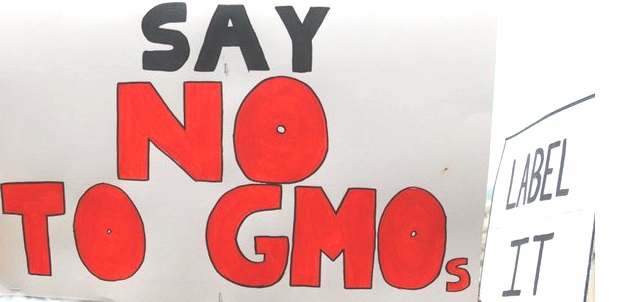
We’ve Missed the Entire Point about GMO Food — a Farmer Explains Why
When it comes to the subject of GMO (Genetically-Modified Organism) food, it's hard not to have an opinion. You might be skeptical or inquisitive, outraged or indifferent; perhaps more often than not, you feel a little of each. Still, there's growing consensus on the issue. A recent poll states that 93 percent of Americans believe that GMO food should be labeled. Consider this statistic a moment: 93 percent of America actually agrees on something. This from a society where 26 percent of respondents still believe the sun orbits around the earth.
September 22, 2015 | Source: The Huffington Post | by Forrest Pritchard
When it comes to the subject of GMO (Genetically-Modified Organism) food, it’s hard not to have an opinion. You might be skeptical or inquisitive, outraged or indifferent; perhaps more often than not, you feel a little of each. Still, there’s growing consensus on the issue. A recent poll states that 93 percent of Americans believe that GMO food should be labeled. Consider this statistic a moment: 93 percent of America actually agrees on something. This from a society where 26 percent of respondents still believe the sun orbits around the earth. Based on this new GMO survey, at long last we can finally agree on what’s for dinner. Or rather, what’s not for dinner. Wait, scratch all that. Maybe we really can’t agree on anything.
As a 20-year farmer who has raised GMO corn and soybeans for the commodity market, as well as organic, sustainable produce sold at farmers’ markets, my two cents is this: Love it or hate it, when it comes to the bigger picture (see 3 “bigger pictures” below), it doesn’t especially matter. The companies that produce GMO seeds and their affiliate herbicides have already won. And with the food scoreboard reading 96 percent industrialized to 4 percent organic, if this had been a farming football game, the mercy rule would have already been called.
The fact is that just a handful of companies provide the corn, soy and canola seeds to America’s farmers, amounting to more than 90 percent of market share. What does this mean for consumers? Nine out of every 10 bites of food — and even higher for chicken (raised on corn and soy), ice-cream (dairy cows supplied corn silage), cheeseburgers (corn) and tortilla chips — are created with GMO ingredients. The same goes for every sip of soda, processed fruit juices, and most yogurts (corn syrup in each). In fact, we’re so jacked up on GMO corn that when a scientist from UC Berkeley created a test — based on corn’s unique carbon patterns — he determined that 69 percent of the average American’s body carbon is derived solely from corn. Insert your own corny joke here.
As a young farmer, I witnessed this change in real time. Starting in 1996 (when GMO seeds went mainstream), practically every farm in my area began widespread adoption of GMO seeds. Meanwhile, worldwide, growth in GMO corn, soybeans, canola, rice, etc. grew at a staggering 9,000 percent. For a global economy mired in a deep recession, it appears that GMO seed companies have been doing just fine and dandy.
